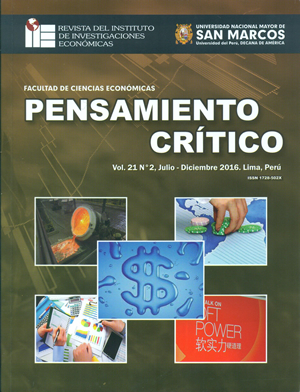Perception of children on violence and urban insecurity and the probability of being victims. Lima Metropolitan and Callao case
DOI:
https://doi.org/10.15381/pc.v21i2.13262Keywords:
Urban insecurity, urban violence, children violence, robberies and assaultsAbstract
This article aims essentially to understand and quantify the degree of victimization and the perception of violence and urban insecurity of children in Metropolitan Lima and Callao. In order to do this we took a survey to 364 children aged between 8-12 years old.
According to survey results, children perceive theft and assault in the street as the most important problem. The rate of victimization in children related to thefts and robberies on the than in school (22,3%) or streets (12,6%).
77% of respondents feel insecure or unsafe on the streets outside their neighborhood. Their confidence in the institutions responsible for urban safety is low: About 60% have little or no trust in the police, and even worse in watchmen (78%).
Children believe that the main factor of why people engage in robbery and assault is that they do not like to work and they want easy carrying.
Our logit econometric regression model indicates that the probability of children suffering some theft or assault in the street is higher as long as they belong to a dysfunctional home and have little or no trust in their parents.
Downloads
Published
Issue
Section
License
THE AUTHORS RETAIN THEIR RIGHTS:
a. The authors retain their trademark and patent rights, and also on any process or procedure described in the article.
b. The authors retain the right to share, copy, distribute, execute and publicly communicate the article published in Pensamiento Crítico (for example, place it in an institutional repository or publish it in a book), with recognition of its initial publication in Pensamiento Crítico.
c. The authors retain the right to make a subsequent publication of their work, to use the article or any part of it (for example: a compilation of their works, notes for conferences, thesis, or for a book), provided they indicate the source of publication (authors of the work, journal, volume, number and date).






